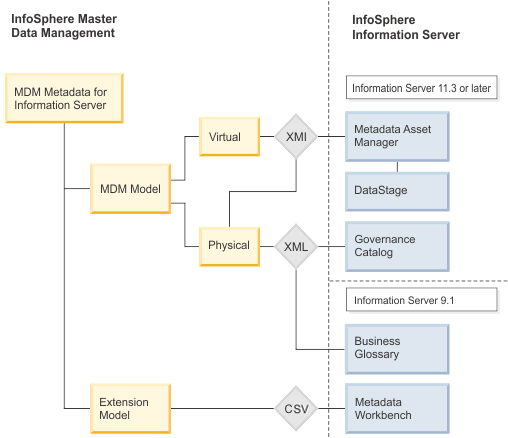The MDM Workbench Export wizard is used to collect metadata (definitions) from virtual and physical MDM projects. The resulting data files can then be imported into and used by InfoSphere® Information Server applications. You can choose to export an MDM model for either virtual or physical MDM or to export an extension model for physical MDM depending upon the version of InfoSphere Information Server that you are using.
The following illustration shows the file types that are created by each export type and the InfoSphere Information Server applications that support that file type.
Hover and click the icons to learn more, or replay the animation.
